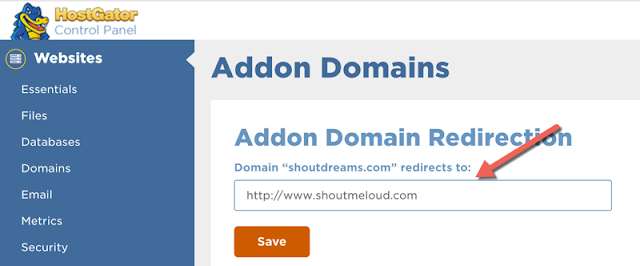Disclosure: This post may contain affiliate links, which suggests we may receive a commission if you click a link and buy something that we recommended. Read more about Affiliate disclosure here.
I have previously posted an in-depth review of Hostgator hosting, and despite problems, I even have had with Hostgator within the past, they're still one among the simplest shared hosting solutions for WordPress.
Hostgator offers various hosting plans, the foremost popular of which is that the Baby hosting plan. This plan offers unlimited bandwidth, unlimited storage, and unlimited domains. this suggests that with one Baby hosting plan, you'll host unlimited websites! I personally host five medium traffic websites on Hostgator’s Baby plan, and my uptime is great.
- Check out: Hostgator Discount Coupon
Many new users who check-in for Hostgator are unaware of the chance to put an add-on domain (or several) into their Hostgator account. during this tutorial, I will be able to explain how you'll add more domains to your Hostgator account.
Even if you've got purchased a website from a source like GoDaddy or Name Cheap, all you would like to try to do is change the name server of your domain to point to your Hostgator account, and add your domain as an add-on domain from the cPanel in Hostgator.
How to use Hostgator’s add-on domains feature:
This tutorial is valid for either the Baby or business shared hosting plan. Login to your Hostgator account and click on on “Add-on domains” under the domains section. See the screenshot for better understanding:
You will be redirected to the Add-on domains screen, where you would like to enter a couple of details which I even have explained below.
In the box to the proper of “New Domain Name”, enter the name you would like to feature in your Hostgator account. If you would like to make a fanatical FTP account for your addon domain, select the choice that says “Create an FTP account related to this Addon Domain.”
You need to make an FTP username and password. you'll choose your password yourself otherwise you can generate a sophisticated password by using the password generator offered under cPanel. The “Document Root” section defines the basis of the domain you're adding. I usually use Public_html/domain name because of the Document Root, because it makes it easier on behalf of me once I got to give FTP access to developers.
Here is how the ultimate screen would look like:
Once done, click on “Add Domain” and you've got successfully added a further (add-on) domain to your Hostgator account!
This feature is additionally useful once you have purchased other domain extensions (.org, .info, etc.) to preserve your name. After adding the extra domains, you'll use Hostgator’s redirection feature on an equivalent page, to redirect the add-on domains to your main name
.This tutorial will work with the other web-hosting company (Ex: Bluehost) which offers standard cPanel.
What to do next after adding a domain:
Again, you'll use the redirection feature to redirect any additional domains to your main domain. If you creating a replacement blog, you'll ask my guide on the way to Install WordPress on Hostgator.
Note: If you've got several domains under your domain registrar and you're not doing anything with them, I like to recommend that you simply install WordPress rather than keeping them idle, and skim my guide SEO for parked domains to form the foremost of this idea.
Check out Hostgator
Use the comments section below to let me know if you've got ever used the add-on domain feature from within your Hostgator cPanel account.
If you discover the knowledge during this post useful, please share it together with your friends and colleagues on Facebook, Twitter, and Google Plus.











No comments:
Post a Comment